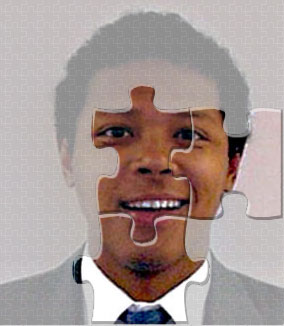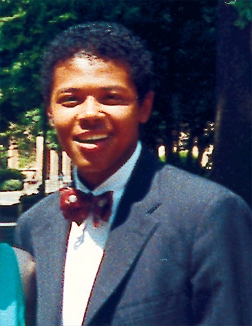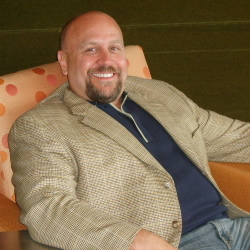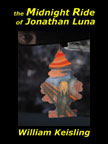PA newspaper editorial demands truth from FBI read >>
Coroner confirms mortician's observations as accurate read >>
Baltimore NAACP head calls for fresh Luna inquiry read >> Video >>
Ed Norris, former head of Maryland state police, helps in Luna case
Witness:
Luna stabbed in back, his
hands and scrotum slashedThe federal prosecutor's scrotum was slashed open, but it didn't appear to be a clean slash. Luna's scrotum looked as if his assailant had been 'working on it'
Posted November 19, 2006 -- New details have emerged concerning the brutal slaying of Baltimore Assistant U.S. Attorney Jonathan Luna, who was found murdered off the Pennsylvania Turnpike on December 4, 2003.In a newly published interview, the undertaker who prepared Jonathan Luna's body for burial vividly describes the wounds suffered by the federal prosecutor. "I've seen lots of murders, but this was definitely the worst one I've ever seen," says Baltimore-area mortician Kim Schlanger MacLeod. The exclusive interview appears in the new edition of Bill Keisling's book The Midnight Ride of Jonathan Luna.
Luna's wounds included stabs on his back, MacLeod recounts. Turning to illustrate the wounds, she placed her finger slightly below the middle of her back, off to one side. "There were stab wounds, here, in the middle of his back, slightly below the shoulder blades, and also around the shoulder blades," she said.
Jonathan Luna in May 1993. Luna was stabbed in the back, his scrotum and hands slashed, and his throat slit, before he drowned in an icy creek. In December 2005, on the second anniversary of Luna's horrific murder, the Washington Post, quoting an unnamed FBI source, suggested that Luna had instead committed suicide by 'staging an abduction but went too far by nicking an artery or crucial vein.'
MacLeod recounted that Jonathan's hands had been "shredded."
"There were long cuts between all the fingers, and cuts to the front and back of each hand." These deep cuts were like slicing razor wounds to his hands, peeling away the skin around his fingers, at places cutting to the bone, indicative of someone having slashed at Jonathan savagely with a knife, she said. To demonstrate, she held her hands up and out as if to block repeated downward slashes from a knife.
"They were clearly defensive wounds," to Luna's hands, she said. Jonathan had been cut savagely trying to fend off his attacker.
"I tried to sew them (Luna's hands) up as best I could but we had to put gloves on for the viewing," she explained.
MacLeod said the federal prosecutor's neck had been slashed open on his right side, and all the way around his throat. She drew her finger along the underside of her neck. She should know, she said. "I was the one who sewed him up."
Luna's longtime friend, Dan Rivera, also says Luna’s hands had been covered with gloves in his casket, and that a long slash wound to Luna's neck was clearly visible.
Had Luna's genitals been cut? Keisling asked undertaker MacLeod.
"It was his scrotum," she said. The federal prosecutor's scrotum had been slashed open, she said, but it didn't appear to be a clean slash. Luna's scrotum looked as if his assailant had been "working on it," she said.
'From the looks of things, a first-rate sicko tortured Jonathan,' writes Keisling in the new edition of The Midnight Ride of Jonathan Luna
In the days following Luna's sensational murder, Lancaster County coroner Dr. Barry Walp shared his impression with the press: "You would think they were perhaps after information from the guy when you see something like this," Walp speculated. Or, "for kicks."
Dr. Walp's successor as Lancaster County coroner, Dr. G. Gary Kirchner, meanwhile, "reiterated his view that Luna’s death was a homicide," writes Helen Colwell Adams in a Lancaster (PA) Sunday News article published on December 3, 2006. Reporting about MacLoed's comments in Keisling's book, Adams writes that Coroner "Kirchner, who took office in January 2004, said last week that MacLeod 'is describing, probably accurately, the wounds on the body. ... She is describing autopsy wounds as well as inflicted wounds. Those linear wounds are the prosecutor looking under bruises for depth of wounds. They were not inflicted pre-death.'"
"From the looks of things, a first-rate sicko tortured Jonathan," writes Keisling in the new edition of his book.
The undertaker says she agrees with the Lancaster County, Pennsylvania coroner who ruled Luna's death a homicide: Luna's wounds were caused by a brutal and sadistic murder.
MacLeod stressed this was the worst murder she'd ever seen.
"He lost a lot of blood," she said.
MacLeod added that said she'd been selected to work on Jonathan's body because she knew the pastor of the Lunas' church, and due to her extensive experience working with badly damaged bodies. At the time of Luna's viewing and funeral, MacLeod worked at the Witzke funeral home in suburban Baltimore. MacLeod today works at a funeral home in Catonsville, Maryland, off the Baltimore beltway.
Ed Norris: new information surfaced about Jonathan Luna's murder when a radio listener called in to talk to writer Bill Keisling on former Maryland State Police Superintendent Ed Norris's radio talk show
Luna was stabbed and slashed dozens of times before drowning in an icy stream a short distance from the Pennsylvania turnpike, following a wild, four-state midnight car ride. Before his disappearance from the federal courthouse in Baltimore, Luna had balked at completing a plea deal designed to protect the FBI and the U.S. Justice Department from a court-ordered investigation in a botched drug case.
Keisling's interview with MacLeod was arranged following an appearance by Keisling on the Ed Norris radio show, broadcast by Baltimore's CBS affiliate WHFS FM, in late August 2006. Norris, the former superintendent of the Maryland State Police, invited Keisling on the show to talk about his book and the Luna case. "This case stinks to high heaven!" the former top policemen told his listening audience.
A funeral home worker phoned in to the radio show to comment on far-fetched allegations that Luna had committed suicide. The listener explained that wounds on the body indicated that Luna had been stabbed in the back, and his genitals mutilated, clearly ruling out suicide. Following the radio show, the worker helped arrange Keisling's interview with MacLeod.
In December 2005, on the occassion of the second anniversary of Luna's horrific murder, the Washington Post, quoting an unnamed FBI source, suggested that Luna had committed suicide by "staging an abduction but went too far by nicking an artery or crucial vein." The Post at that time also incorrectly reported that "most" of Luna's wounds were "superficial." The Post and other daily periodicals have steadfastly refused to examine the last hours and days of Luna's life, or to examine why Luna balked at completing a plea deal designed to prevent a court-ordered investigation of the FBI and the Justice Department.
To a criminologist, a victim's everyday routines, including his workplace habits and acquaintances, are considered crucial in solving a violent crime. "Most violent crimes require an intersection in both time and place between the offender and the victim," writes Don Foster in his book, Author Unknown. The workplace certainly can't be eliminated from any full equation, even in a case like this, swamped as it is with political, legal and social pressures.
In his book, text analyst Foster writes of his work with the FBI in the Ted Kaczynski-Unabomber case. Foster points out that, in the Unabomber case, the clues were there all along, but investigators for years either misread them, or missed them altogether.
"Victimology is a field of research that covers a wide range of offender-victim relations and attendant issues, such as social attitudes towards victims of rape," Foster writes. "In a criminal investigation, the victimologist studies the victims as a means of understanding the offender, drawing on techniques developed by such experts as Brent Turvey and Robert Ressler." Foster continues, "Tracing the victim's conference zone (home area, circle of acquaintance), movements, job history, and past conflicts may lead detectives to the offender even when the victim has no names to offer."
A fascinating aspect of the Luna case is that Luna's "primary conference zone" included the Baltimore federal courthouse, where, the night of his death, Luna's acquaintances in the Justice Department were attempting to cover-up the FBI's mishandling of a drug informant. This was a cover-up which Luna, in the hours before his death, vocally resisted, and in which he ultimately refused to participate. The Justice Department and the FBI naturally want the public to look everywhere but here. Yet the nature of Luna's wounds clearly suggests a fury and savagely of a sudden interaction with a hot-blooded killer incensed, we may presume, by some very recent event.
A full account of Keisling's interview with MacLeod appears in the new edition of The Midnight Ride of Jonathan Luna. With this revised edition, the book has entered its third printing.



